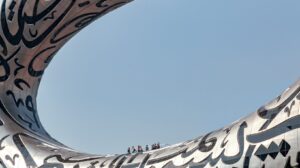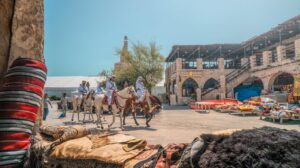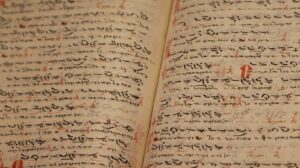Ever wondered about the fascinating world of language and how it intertwines with geography? Today, we’ll dive into the unique realm of Arabic language and its connections to global places. Specifically, we’re exploring the country that’s known as “the land of two seas” in Arabic.
Arabic, a rich and complex language, often bestows poetic names Nama Negara Mana Yang Berarti Dua Laut Dalam Bahasa Arab upon places. This particular country’s name is no exception. It not only reflects the nation’s geographical features but also its cultural significance. So, let’s set sail on this linguistic journey, uncovering the country that’s so beautifully described as “the land of two seas” in Arabic.
Nama Negara Mana Yang Berarti Dua Laut Dalam Bahasa Arab
Arabic, as alluded to in previous sections, douses geographical features with a linguistic glow that embodies both the physical and cultural space they occupy. One country that reflects this lyrical description is Bahrain, translated to “Two Seas” in Arabic. Bahrain, an island nation nestled in the Persian Gulf, is enveloped by a tapestry of salty and sweet waters that coalesce to form “two seas.”

The concept of duality, symbolized through “two seas,” is recurrent in the names Nama Negara Mana Yang Berarti Dua Laut Dalam Bahasa Arab of several regions. An apt example is Garba bahrayn the ancestral name for Sind in Pakistan, depicts a region underscored by the merged waters of the Indus river and the Arabian Sea.
Despite the compelling draw these areas have due to their representations as “lands of two seas,” there’s a critical point to underline: Arabic naming conventions pivot around geographical features. Indeed, the usage of “two seas” isn’t just a delightful linguistic artifact; it is instead reflective of the rich interactions of land, population, and water. Past and present, geography and culture, inland and coastal – these dichotomies help distill the essence of these culturally rich landscapes.
Where Else Does this Linguistic Charm Unfold?
It’s seen swirling through the winds in the sandy dunes of Rub’ al Khali, the Empty Quarter, or creeping in the mystic maze-like passageways of Fez’s Old Medina, or Fes el Bali in Arabic. Fez’s Old Medina, the world’s largest surviving medieval city and a UNESCO World Heritage Site, is undoubtedly another high point of Arabic linguistic geography.

Overview of Arabic Language
The vast landscape of the Arabic language is as diverse and profound as the regions where it’s spoken. Interestingly, the historical journey of Arabic illustrates a deep connection with the land, shaping the language with rich geographical annotations.
Origin and Characteristics of Arabic
Historically, Arabic originated from Proto-Semitic, the common ancestor of the Semitic languages. It’s commonly divided into Classical Arabic, Modern Standard Arabic, and colloquial Arabic. While Classical Arabic is the language of the Quran, Modern Standard Arabic largely serves as a unifying language across diverse cultures and regions. On the other hand, colloquial Arabic varies considerably from region to region.
Arabic exhibits unique characteristics in script, phonology, and grammar. The script is written from right to left, comprising 28 letters that are interconnected. Interestingly, the rich phonetic system of Arabic includes several sounds not found in other languages. Additionally, the language boasts a highly inflected grammar system where word forms often depend on their role in the sentence.

Arabic holds immense cultural, linguistic, and religious significance worldwide. It’s listed as one of the six official languages of the United Nations and boasts over 300 million native speakers. This extends its reach to over 25 countries, making it a linguistically significant language on the global scale.
The influence of Arabic can also be noted in several other languages. Words of Arabic origin populate languages like English, Persian, Turkish, Urdu, Spanish, and many more. This cross-linguistic presence enhances the relevance of Arabic, further demonstrating its influence.
Moreover, the cultural connotations of the Arabic language are deeply intertwined with Islam, as it’s the liturgical language of the religion. The Quran, the Islamic holy book, is in Arabic and serves as an important link for Muslims all around the world.
Selected Countries with Names Meaning “Two Seas” – Nama Negara Mana Yang Berarti Dua Laut Dalam Bahasa Arab

The journey through Arabic’s linguistic landscape doesn’t end here. There’s still a vast expanse to discover, promising more intriguing insights and revelations about the world we live in. So, let’s continue to delve into the depths of the Arabic language, for it’s not just a means of communication, but a bridge that connects us to the rich tapestry of human history and culture.








